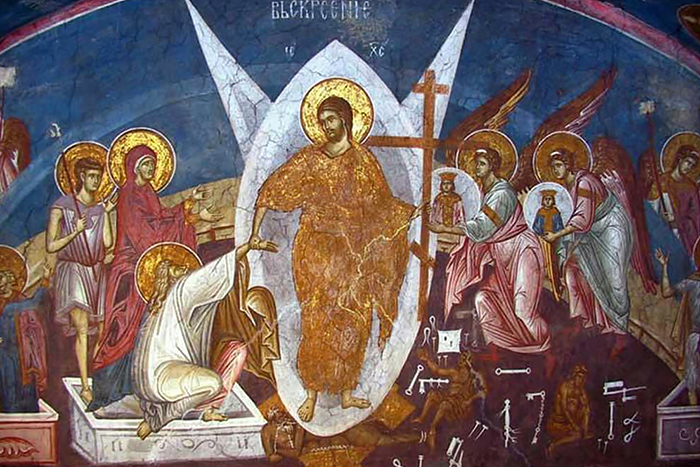
One of the main liturgical highlights of the celebration of the Baptism of the Lord is undoubtedly the Great Blessing of Water. The first blessing of water takes place on the eve of the feast of Epiphany, and the second generally follows the Liturgy on the day of Epiphany itself. Interestingly though, the Typicon of the Orthodox Church does not mention the second blessing of water; the Typicon says only about one such blessing. So where did the practice of doing the Great Blessing twice come from?
There Is No Second Consecration in the Rubrics
The problem with having water blessed twice is, for the most part, the lack of any mention of it in the liturgical books of the Orthodox Church. This tradition itself is quite ancient, it is mentioned already in the 6th century. In Palestine, in addition to the blessing of water in the church in the evening, they had a blessing of the waters of the Jordan in the morning of the holiday. The antiquity of the double blessing is also confirmed by its presence in the divine services of the Maronite Syrians, who blessed the water in church in the evening and the water in streams in the morning. Nonetheless, all the extant typicons of the great Studite Monastery prescribe just one blessing. Saint Nikon of Montenegro (†1097) considered the custom of blessing water twice wrong (Tacticon, Homilies 1 and 38), albeit widespread during his time.
The Spread of the Custom
Where, then, did the custom of blessing water twice come from, even though some zealots of the Typicon considered it wrong? This tradition possibly dates back to the custom of blessing water twice in different parts of the Hagia Sophia, as evidenced by some manuscripts of the Typicon of the Great Church (9th-11th centuries). More likely, however, it was due to the influence of the ancient Jerusalem tradition of blessing water on the mornings of the holiday because of the proximity of the Jordan and the associated Gospel events. It is no coincidence that the tradition of double blessing became ubiquitous in the 13th-14th centuries, when the divine services of the entire Orthodox Church adopted the Jerusalem Typicon. Despite the prevalence of this practice, it still remains an unwritten custom, for both the modern Typicon and the ancient editions of the Typicon of St. Sabbas the Sanctified, bar some manuscripts, remain silent about the second blessing.
Disputes in the Russian Church
The lack of intelligible liturgical instructions led to disputes over this issue in the Russian Church. Thus, Saint Maximus the Greek (†1556) decided to write the apology of the two blessings of water, defending the practice of the monasteries of Athos. However, the editors of the old-print Typicon of 1610 took a different view, arguing that the Studite and Jerusalem Typica commanded that water should be blessed only once. Patriarch Nikon (†1681) attempted to solve the problem radically by simply forbidding the blessing of water twice in 1655, citing that the Lord Jesus was also baptized only once. Nikon’s decision did not gain the support of the believing people and even became one of the reasons, along with his other reforms, to accuse him at the Great Moscow Synod in 1666-1667, which restored the already established practice of a second blessing after matins. In 1682, Patriarch Joachim gave his permission to carry out the second blessing after the festive liturgy, which is still observed today.
The Russian Practice and the Symbolism of Two Blessings
In ancient times, the first blessing took place in the church, and the second at the outdoor water bodies. The procession to the waters and the blessing of the cross-shaped font (the so-called Jordan) was very solemn and was considered one of the major events of the liturgical year (A. V. Petrovsky, Water Consecration // The Orthodox Theological Encyclopedia. 1902. Vol. 3, p. 663). In major cities, the procession to the Jordan was often led by the bishop himself, with the participation of the entire clergy of the city and the surrounding villages. After the great blessing, priests went to their parishes to perform the Eucharist.
The blessing on the Epiphany Eve is symbolically associated with the baptism of catechumens, which is why in many parishes it is performed in the narthex, where the catechumens were baptized in ancient times. On the other hand, the Church carries out the second blessing not only for the sanctification of the faithful, but also in memory of the Lord’s Baptism, so it occurs at water springs, rivers and even seas.



